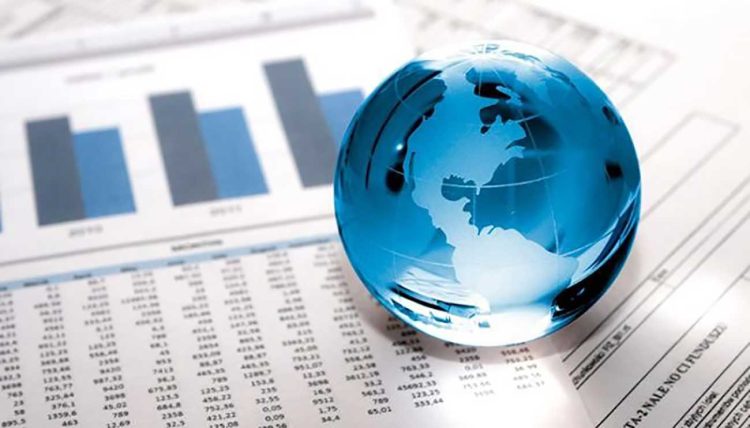Publisher: Maaal International Media Company
License: 465734
What are market and economic trends in 2023?
News reports expected that the “new normal” would be much different from the past two years, or even the 2020s, as the year 2022 witnessed many challenges and variables, including, bear markets all over the world that wiped out $22 trillion from Wealth, inflation at its highest level in 40 years, central bank tightening, Russia’s invasion of Ukraine, tense elections, and the collapse of risky assets.
Slow growth:
According to a recent report on the “Investopedia” website, it is almost certain that the rapid rise in interest rates around the world – with the exception of China and Japan – in order to calm inflation, which reached its highest levels in several decades, will lead to a sharp economic contraction, especially in the United States, Europe and the United Kingdom. The IMF expects global growth to slow to 2.7% next year, the weakest pace since 2001. Global GDP is expected to remain at around 3.2% in 2022, down from 6% in 2021 amid the pandemic recovery.
اقرأ المزيد
Recessions are painful for all economies, but they especially affect developing countries that depend heavily on exports. The strong dollar over the past year has weakened many of these economies, and high interest rates have inflated borrowing costs due to their heavy debt levels.
Continuing inflation
Many CEOs and economists expect a recession in the United States starting in early 2023 and lasting through at least the third quarter of the year. While the New York-based economic think-tank, the Converse Board, indicates that the recession has already begun in the United States, and says that it will continue through at least the first quarter of 2023. More than half of Investopedia readers, according to the latest survey, expect a recession. Stagnate next year too. The report considered that the depth and duration of the recession in the United States is the great unknown, but if there is a positive side, it is that companies and consumers have obtained better capital in 2022 than they did in 2008 and 2000 to deal with the downturn.
Interest rates:
It will stay higher for longer According to the report, the Federal Reserve raised the federal funds rate six times in 2022, from 0% to 0.25%, to between 3.75% and 4%, the fastest pace of rate hikes ever. The latest reading of Consumer Expenditure shows an annual increase of 6%, still far from the Fed’s target rate of 2%. This means that more price hikes are coming in the new year. The Fed’s final interest rate – the rate at which central bank increases will peak – is currently above 5%. As Fed Chairman Powell has said time and time again, “We still have a way to go.”
Dollar strength:
The strong dollar has been a haven for investors. With central banks raising interest rates and bond prices remaining under pressure this year, investors have been holding on to the dollar amid a drop in stock prices. The dollar’s appreciation reduced the profits of US companies that depended on exports, and punished America’s trading partners. Their debts, estimated at trillions of dollars, are priced in dollars
However, higher interest rates by central banks and the possibility of a recession could mean that the dollar will remain strong through at least the first half of 2023.
Missing contracts:
As higher interest rates slowly erode high inflation, more economists and market watchers expect stagflation due to slower growth. Stagnant inflation, persistently rising prices amid slow growth and high unemployment, is not investor friendly. Japanese investors know this very well, as this period is known as the lost decades, which is the economic recession crisis in Japan in the nineties of the twentieth century, and this name refers to a period of economic stagnation experienced by Japan due to the collapse of the asset price bubble in late 1991. The term originally referred to the years from 1991 to 2001. But it actually lasted three decades.
The stock market:
Investment banks and money managers are formulating their forecasts at the moment, but the general consensus is that US stock market returns will be below their annual average of 8-9% target
US Vanguard Consulting Group in its 2023 Economic Forecasts, 10-year US stock market returns ranging from 4.7% to 6.7% thanks to the headwinds of high interest rates, high inflation, and potential recession, all of which have historically failed to secure a smooth transition in the market. Securities
Geopolitical tensions:
Russia’s invasion of Ukraine, which began in February 2022, will remain a hotspot of uncertainty in the new year. The human and economic toll has already been devastating, and the end game could not be clearer. From an economic standpoint, energy prices have fallen since this spring, just after the invasion, and are already trading lower than they were before it began. But with no solution in sight and nuclear threats emanating from the Kremlin, the rest of the world has something to fear from rising energy prices. Relations between the United States and China remain tense, as usual, as China grapples with its zero-COVID policy, which has sparked political unrest and economic turmoil across the country. Given China’s key role as the world’s second largest economy, its relations with the United States and how the nation navigates wave after wave of COVID cases makes 2023 a defining year for the economic powerhouse and everyone who deals with it.
Other global hotspots include Taiwan, its relationship with China, as well as the long-simmering tension between India and Pakistan.
Climate change:
No matter what happens to monetary policy or inflation in 2023, the impact of climate change will be felt around the world. This year has seen droughts, wildfires, floods, hurricanes and deep freezes that have killed hundreds of thousands of people, displaced millions and cost tens of billions of dollars in damage. Supply shortages and disruptions to natural gas and crude oil, exacerbated by the war in Ukraine, will drive up fossil fuel prices in 2022, meaning less money flows into renewable solutions and climate technology. Some promises were made at the recent climate summit in Egypt, but those mostly centered around developed economies to help poor countries pay for the damages they have suffered as a result of climate change. Adapting to climate and reversing global warming in beneficial ways remains to be addressed. This means that the planet and all the economies operating on it are at the mercy of any catastrophe that may be lurking in the year 2023.









